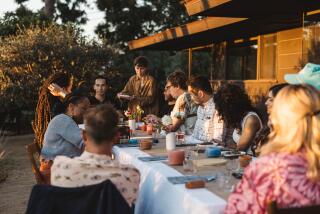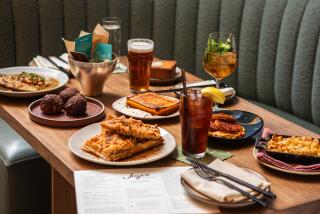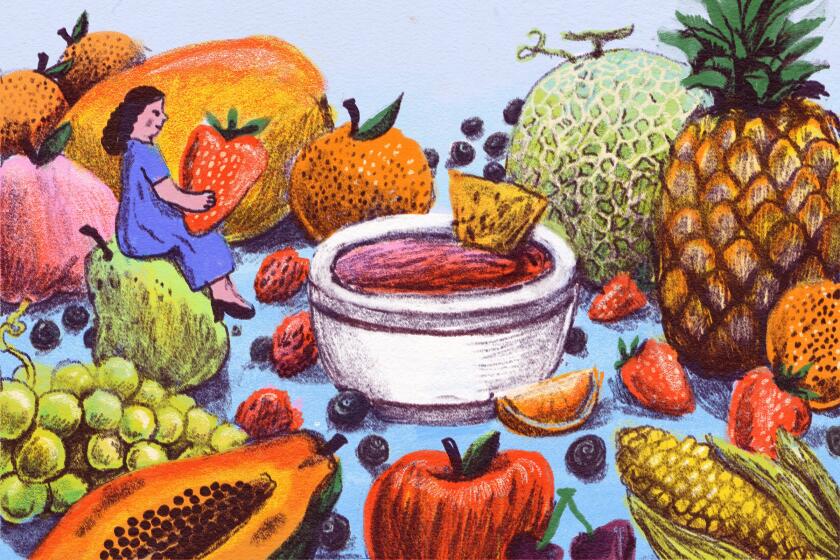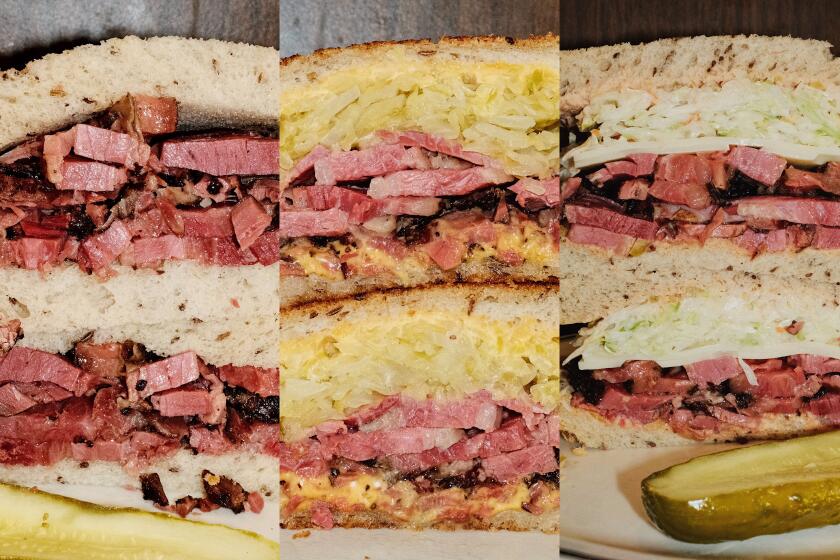Sharing your food photos? Make that dish look as good as it tastes
We’ve seen you in restaurants. We know what you’re doing.
Taking pictures of your food to share on Twitter, Facebook, Pinterest and more is great fun. And it makes your friends jealous. How can you make those photos look great? Think about the background and the props.
Give it a sense of place
The choice of background and props in a food shoot can go a long way in giving a photograph a sense of place. Other elements include lighting and focus. Together, these elements work to give the image a proper mood and look.
A mixture of texture and color of the props must complement the food to give the image a polished look and allow it to make sense to the viewer. What complements a dish can be very specific to the stylist and photographer. I draw heavily on sights, sounds and smells I experienced growing up in and around the kitchens of my mother and grandmother. I spent my summer on my grandparents’ farm in Charleston, S.C. -- well-known for its low-country style of cooking. My grandmother would always tell me to “accent a photograph the same way a chef would accent a favorite dish, a little pinch of this and that. And remember that less is always more.”
If you haven’t made the food you’re photographing, I would recommend working with the cook or chef to get a feel for the love and labor that went into the dish. I’ll also add that, since food shoots -- like almost any other photo shoots -- are a collaborative effort, not everyone gets his or her way every time. What matters is that the end result feels and looks good. Check out the photo gallery above for a sampling of shots that play up background and props (along with links to related recipes and stories), and continue reading below for my notes on each image.
PHOTOS: Tips and tricks to better food photography
Cooks County restaurant pastry chef Roxana Jullapat uses honey from Silverlake in her dessert featuring honey melon sorbets and honey cake with figs. This dessert was shot on location at the restaurant. I found a spot on a table where a streak of light fell across a table and positioned the food just into the light. The background recedes into shadow to focus the eye on the dish itself.
Chicken and andouille gumbo: I wanted to give the photo a New Orleans feel with the weathered shutters. I accented the photo with a red napkin to contrast with the green of the shutters. I added streaks of light to highlight the spoon and bowls.
Luis Pato’s robust Casta Baga accompanies a platter of cheese, salumi and bread: I wanted this photo to say picnic at first glance. I brought in a bucket of dirt and weeds and set everything up in the studio so I could control the lighting. A few well-placed rocks and it looks like the perfect outdoor setting. (After the shot, I was ready to break out the Frisbee.)
Pork belly and greens hot pot: I chose a bamboo placemat for this photo to keep with the Asian-themed food, placing the chopsticks at a different angle to create a little tension in the photo.
Old World breads: With this shot, I paid homage to Old World master painter Rembrandt, borrowing his love of shadow and earthy brown tones and accented lighting. I wanted to create a scene that would do him proud.
Caesar salad with anchovies: One of the easiest props to use is food itself. By using repetition (repeating the image over and over again until it disappears into the background) a mirrored illusion effect fills the void and creates tension. Vary the depth of field and the item will gradually blend into a Monet painting-like blur.
Rose wines bloom in many shades: The wine glasses here are another example of repetition and complementary colors.
Stock photo of white wine with bottle: I added a little tension to this photo by tilting the image and adding the green bottle, a complementary color to the yellow in the wine glass.
Cayenne’s Moroccan chicken soup: The bowl and spoon help to carry the theme. I added a splash of color with the yellow lemon, and a beam of light onto the spoon to give some weight to the left side of the shot.
Puffed pastry vol-au-vents with herbed goat cheese salad: Light and airy lunch salad was the inspiration for this background. I wanted to carry the idea that this meal was light both in looks and texture. I chose high-key lighting to blow out the background and make it transparent and bright.
Dandelion pesto with linguine: I used contrasting colors in this photo, the red painted background makes the green pesto more vibrant.
Perfumed nectarine jam on toast: For this shot of homemade jam on toast, I used the whole fruit in the background to reinforce the idea of the dish. The red of the nectarine contrasts with the green of the leaves on the white backdrop. Less is more here.
Sticky rice with mango: I used a simple green woven placemat and put the sticky rice in a bowl that had the feel of a shell to give the image a themed quality. I used a fork with a polished look and placed it in the lower left of the frame to add balance and weight to what would have been empty space. Accent light was positioned on the mangoes to add color and as a means to direct the viewer’s eye.
Caesar salad with crunchy croutons: When you are out of ideas for a background or props, create shadows. I cut the shape of a windowpane and pumped light through it to give the impression of the salad sitting on a table by a window on a sunny day.
This is part of a series of posts on food photography, sharing some of the tips and tricks we use here at The Times. We’ve received a number of great questions from readers, which we will answer in upcoming posts.
Questions or suggestions? Food photography challenge? Comment below or email Noelle Carter at noelle.carter@latimes.com.
ALSO:
Creating food porn with texture
Shooting food with your phone? Check this out
Trick out your food photos with utensils and props
More to Read
Eat your way across L.A.
Get our weekly Tasting Notes newsletter for reviews, news and more.
You may occasionally receive promotional content from the Los Angeles Times.










